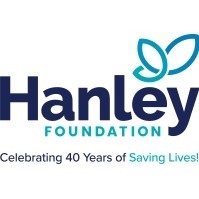Marijuana Prevention: Protecting Youth and Promoting Healthy Choices

Marijuana, also known as cannabis, has become one of the most commonly used substances worldwide. With legalization spreading in various regions for medical and recreational purposes, public perception of marijuana has shifted significantly in recent years. While many adults may use marijuana responsibly, its impact on youth and developing brains can be significant and long-lasting. That's why marijuana prevention efforts—particularly among teens and young adults—remain essential to promoting overall public health and safety.
Why Marijuana Prevention Matters
Although marijuana is often portrayed as harmless or “natural,” it carries real risks—especially for adolescents. Research shows that regular marijuana use during adolescence can affect brain development, impair memory and learning, reduce academic and athletic performance, and increase the risk of mental health issues such as anxiety, depression, and psychosis. Additionally, marijuana use at a young age can lead to the development of substance use disorders later in life.
Young people are especially vulnerable to peer pressure, social media influence, and misinformation about marijuana. When they are surrounded by messages that normalize or glamorize its use, they may be more likely to experiment with it without understanding the potential consequences. Prevention aims to educate, support, and empower young people to make informed, healthy decisions.
Understanding the Risks
Prevention efforts must start with a clear understanding of the risks associated with marijuana use:
- Cognitive Impact: THC, the psychoactive component in marijuana, affects the brain’s reward and learning systems. In adolescents, it can disrupt the development of areas responsible for decision-making, attention, and memory.
- Mental Health: Marijuana use has been linked to increased risk of mental health issues, especially in those with a family history of psychiatric disorders. Early and frequent use can increase the risk of psychosis, schizophrenia, and other conditions.
- Academic and Social Effects: Regular marijuana use can lead to decreased motivation, poor academic performance, and strained relationships. It can also reduce participation in extracurricular activities that support personal growth.
- Addiction Risk: Contrary to popular belief, marijuana can be addictive. About 1 in 10 marijuana users will develop a use disorder; this risk increases to 1 in 6 if use begins during adolescence.
Effective Prevention Strategies
To reduce marijuana use among youth, prevention strategies need to be comprehensive, consistent, and community-based. Here are some key components:
1. Education and Awareness
Providing accurate, science-based information about marijuana and its risks is the cornerstone of prevention. Schools, parents, and community organizations should collaborate to ensure that young people understand the short- and long-term consequences of use.
Programs like D.A.R.E. (Drug Abuse Resistance Education) or evidence-based curriculums such as Too Good for Drugs offer structured approaches to teaching students how to resist peer pressure and make healthy choices. It's important that these messages are age-appropriate and updated to reflect current trends and data.
2. Parental Involvement
Parents play a critical role in prevention. Teens who have strong, supportive relationships with their parents and who feel comfortable talking about tough topics are less likely to engage in risky behaviors.
Parents should set clear expectations around drug use, talk openly about marijuana, and model healthy behavior. Simple conversations—started early and continued regularly—can have a lasting impact.
3. Community Engagement
Prevention works best when the whole community is involved. Local leaders, educators, law enforcement, healthcare providers, and youth organizations must work together to build a culture that promotes healthy lifestyles and discourages substance use.
Public health campaigns, town hall meetings, and youth-led initiatives can amplify prevention messages and create a supportive environment for young people to thrive.
4. Policy and Regulation
Strong public policies can also serve as a form of prevention. These include restricting marketing and packaging that appeals to children, setting age limits for purchasing cannabis, and ensuring proper labeling with warnings.
Additionally, maintaining safe school and community environments that are free from drug influence helps reduce exposure and temptation.
5. Skill-Building Programs
Teaching young people practical skills—such as stress management, decision-making, conflict resolution, and assertiveness—can reduce their likelihood of turning to substances to cope with challenges. Life skills training not only prevents marijuana use but also prepares youth for success in all areas of life.
The Role of Schools and Educators
Schools are in a unique position to deliver consistent prevention messages and identify students who may be at risk. Teachers, counselors, and coaches can observe changes in behavior, academic performance, and social interactions that may indicate substance use.
Providing support systems—such as peer mentoring, school counseling, and afterschool programs—gives students a safe space to discuss concerns and find alternatives to drug use. When students feel valued, connected, and capable, they are more likely to avoid risky behavior.
Looking Ahead: A Balanced Approach
Prevention does not mean demonizing marijuana or ignoring its legal status. Instead, it means acknowledging its potential risks and working to reduce harm—especially among young people. A balanced, compassionate, and informed approach is essential.
This includes supporting individuals who struggle with marijuana use and ensuring they have access to mental health services and recovery resources. It also means challenging the myths and misinformation that often surround marijuana in pop culture and media.
Conclusion
Marijuana prevention is not about fear—it’s about facts, support, and empowerment. By educating youth, involving families, engaging communities, and implementing smart policies, we can help young people make healthy, informed choices. The goal is not just to prevent drug use but to promote overall well-being, resilience, and success for the next generation.
- Art
- Causes
- Crafts
- Dance
- Drinks
- Film
- Fitness
- Food
- Juegos
- Gardening
- Health
- Home
- Literature
- Music
- Networking
- Other
- Party
- Religion
- Shopping
- Sports
- Theater
- Wellness


